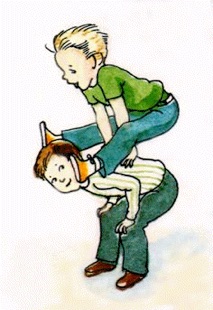Orthogonal glycosylation


Orthogonal glycosylation



Chap. 1:
Chap. 2:
Chap. 3:
Chap. 4:
Chap. 5:
Chap. 6:


Chapter 1
What is Orthogonal Coupling?

The term, orthogonality, is frequently used in a generalization of its mathematical meaning to describe sets of primitives or capabilities that, like a vector basis in geometry, span the entire `capability space' of the system and are in some sense non-overlapping or mutually independent.
Let's analyze a leapfrog play as an example of the orthogonal system. There is a set of capabilities of actions involved in this capability space of leapfrog system, one is to leap over and the other is to stoop. The set of independent capabilities (two actions kids make) is orthogonal. As a result, kids who are capable of making two orthogonal actions, are capable of playing in the leapfrog system. Therefore, it is considered this concept is important as the fundamental of systems that requires continuation of a certain process. Furthermore, it should be noted that the number of players is not limited to two kids for the leapfrog play.
An important concept of orthogonal protection was first defined by Baranay and Merrifield as "a set of completely independent classes of protection groups, such that each class can be removed in any order and in the presence of all other classes".[1] Orthogonal protecting group manipulations are widely accepted in the peptide chemistry and can be seen in other fields. Although this important concept can be generally applied in the synthetic field in polymeric materials such as peptide chemistry, the term itself is used to describe the independency of protecting groups during deprotection reactions and is nothing to do with the condensation reactions. Therefore, the synthesis requires multiple steps prier to the coupling reactions.
In order to reduce synthetic steps to the limit, aforementioned leapfrog system is required in the coupling reactions. In this system, each synthon has a functional group that shows orthogonal nature, a set of independent aspects, such as capability of innertness and capability to be activated under certain conditions.
Criteria are
1) A functional group X can be activated under conditions A but stable under conditions B and
2) A functional group Y can be activated under conditions B but stable under conditions A.
When individual synthons (Si) carry X or Y and reactive functional group such as hydroxyl group, a coupling of (S1)-X and HO-(S2)-Y under conditions A may results in (S1)-O-(S2)-Y. The coupling of (S1)-O-(S2)-Y and HO-(S3)-X under conditions B may resulted in (S1)-O-(S2)-O-(S3)-X, and so on. This was examined and successfully achieved. The results were reported in the field of oligosaccharide synthesis.
The fundamental of the orthogonal condensation system is the combined use of these individual reactions which enable the synthesis of polymeric compounds without deprotection or activation step. [2,3,4,5] One of the advantages in the orthogonal couplings is that a synthon carrying persistent leaving group can be pre-mixed with the activator for the other leaving group. This is of particular importance when the method is applied to the solid-phase chemistry. A pre-mixed activator and a synthon is adsorbed into a polymer-bound synthon carrying a leaving group to be activated. Addition of the pre-mixed solution is important for the successful solid-phase reactions avoiding diffusion dependent time lag for the desired reaction. [6,7]
References
1.Baranay, G., Merrifield, R. B., J. Am. Chem. Soc. 1977, 116, 7363-7365.
2.Kanie, O., Ito, Y., Ogawa, T. J. Am. Chem. Soc. 1994, 116, 12073-12074.
3.Zeng, F., Zimmerman, S. C. J. Am. Chem. Soc. 1996, 118, 5326-5327.
4.Kanie, O., Ito, Y., Ogawa, T. Tetrahedron Lett. 1996, 37, 4551-4554.
5.Ito, Y., Kanie, O., Ogawa, T. Angew. Chem. Int. Ed. 1996, 35, 2510-2512.
6.Ako, T., Daikoku, S., Otsuka, I., Kato, R., Kanie, O. Chem. Asian J. 2006, 1, 798-813.
The drawing of leapfrog was taken from "The Golden Picture Dictionary" by Lucille Ogle and Tina Thoburn, illustrated by Hilary Knight, A Golden Book, New York, Western Publishing Company, Inc., Racine, Wisconsin 53404 *Studies on the orthogonal glycosylation strategy for oligosaccharide synthesis was proposed by Dr. Kanie as a project of "basic science research program" at RIKEN supported by the Science and Technology Agency of the Japanese Government and carried out in Ogawa Lab. with Dr. Ito.
